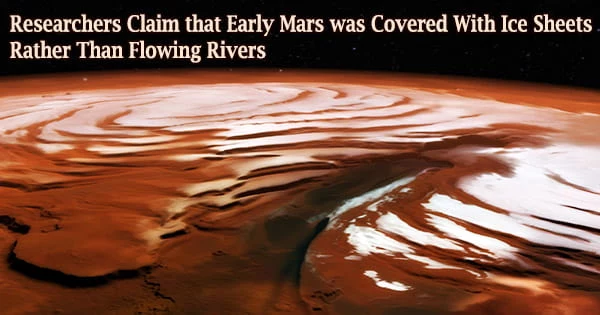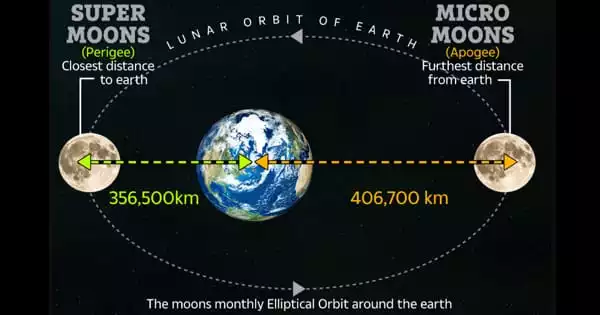Mars, named for the Roman god of war, has long been seen as a forerunner in the night sky. The planet’s rusty red surface, too, conveys a story of destruction in its own way. The fourth planet from the sun could have been mistaken for Earth’s smaller twin billions of years ago, with liquid water on its surface and possibly even life.
According to a new UBC study published today in Nature Geoscience, a huge proportion of the valley networks scarring Mars’ surface were formed by water melting beneath glacial ice, not by free-flowing rivers as previously thought.
The findings essentially debunk the popular “warm and wet ancient Mars” idea, which claims that the red planet originally had rivers, rains, and oceans.
Lead author Anna Grau Galofre, a former Ph.D. student in the department of earth, ocean, and atmospheric sciences, devised and applied novel methodologies to study thousands of Martian valleys in order to achieve this result. She and her co-authors also found significant similarities between the Martian valleys and the subglacial channels in the Canadian Arctic Archipelago.
“For the last 40 years, since Mars’s valleys were first discovered, the assumption was that rivers once flowed on Mars, eroding and originating all of these valleys,” says Grau Galofre. “But there are hundreds of valleys on Mars, and they look very different from each other. If you look at Earth from a satellite you see a lot of valleys: some of them made by rivers, some made by glaciers, some made by other processes, and each type has a distinctive shape. Mars is similar, in that valleys look very different from each other, suggesting that many processes were at play to carve them.”
Surface temperatures on Mars can range from 70 degrees Fahrenheit to -225 degrees Fahrenheit, but the average temperature is -81 degrees Fahrenheit, which is 138 degrees colder than Earth’s average.
The findings demonstrate that only a fraction of valley networks match patterns typical of surface water erosion, which is in marked contrast to the conventional view. Using the geomorphology of Mars’ surface to rigorously reconstruct the character and evolution of the planet in a statistically meaningful way is, frankly, revolutionary.
Mark Jellinek
Seasons, polar ice caps, volcanoes, canyons, and weather exist on Mars, just as they do on Earth. Carbon dioxide, nitrogen, and argon make up its extremely thin atmosphere. On Mars, there are indications of ancient floods, although water presently largely exists in the form of ice mud and thin clouds.
There is evidence of liquid salty water in the earth on several Martian mountains. The scientists were inspired to perform their comparison study because numerous Martian valleys resemble subglacial waterways on Devon Island in the Canadian Arctic.
“Devon Island is one of the best analogues we have for Mars here on Earth it is a cold, dry, polar desert, and the glaciation is largely cold-based,” says co-author Gordon Osinski, professor in Western University’s department of earth sciences and Institute for Earth and Space Exploration.
The researchers looked at over 10,000 Martian valleys in all, using a new technique to deduce the underlying erosion processes.
“These results are the first evidence for extensive subglacial erosion driven by channelized meltwater drainage beneath an ancient ice sheet on Mars,” says co-author Mark Jellinek, professor in UBC’s department of earth, ocean, and atmospheric sciences.
“The findings demonstrate that only a fraction of valley networks match patterns typical of surface water erosion, which is in marked contrast to the conventional view. Using the geomorphology of Mars’ surface to rigorously reconstruct the character and evolution of the planet in a statistically meaningful way is, frankly, revolutionary.”
Grau Galofre’s idea also explains how valleys formed 3.8 billion years ago on a planet further from the sun than Earth, during a time when the light was less strong.
“Climate modelling predicts that Mars’ ancient climate was much cooler during the time of valley network formation,” says Grau Galofre, currently a SESE Exploration Post-doctoral Fellow at Arizona State University.
“We tried to put everything together and bring up a hypothesis that hadn’t really been considered: that channels and valleys networks can form under ice sheets, as part of the drainage system that forms naturally under an ice sheet when there’s water accumulated at the base.”
These habitats would also provide superior survival circumstances for any ancient life that might have existed on Mars. In the absence of a magnetic field, which Mars formerly had but lost billions of years ago, a covering of ice would provide additional safety and stability for the underlying water, as well as offering shelter from solar radiation.
While Grau Galofre’s research centered on Mars, the analytical methods she built for this project can be used to learn more about our own planet’s early history. According to Jellinek, he plans to utilize these new algorithms to evaluate and explore erosion features that date back to the early Earth’s history.
“Currently we can reconstruct rigorously the history of global glaciation on Earth going back about a million to five million years,” says Jellinek.
“Anna’s work will enable us to explore the advance and retreat of ice sheets back to at least 35 million years ago to the beginnings of Antarctica, or earlier back in time well before the age of our oldest ice cores. These are very elegant analytical tools.”
















